

Learning for Justice. Zinn Education Project: People's History by Theme. Welcoming Week Toolkit. LGBTQ Resource Guide (AASL) Developing Inclusive Learners and Citizens (AASL) To aid school librarians in nurturing inclusive learning communities, AASL tasked a 2019 ALA Emerging Leaders team with developing a guide of reflection activities and resources based on the Include Shared Foundation in the National School Library Standards.
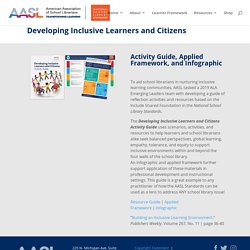
Global Oneness Project. Project READY: Reimagining Equity & Access for Diverse Youth – A free online professional development curriculum. Diversity Websites. The Center for Applied Linguistics (CAL).
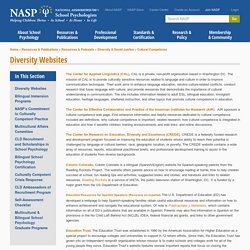
CAL is a private, non-profit organization based in Washington DC. The mission of CAL is to provide culturally sensitive resources related to language and culture in order to improve communication techniques. Their work aims to enhance language education, resolve culture-related conflicts, conduct research that fuses language with culture, and provide resources that demonstrate the importance of cultural understanding in communication.
The site includes information related to adult ESL, bilingual education, immigrant education, heritage languages, sheltered instruction, and other topics that promote cultural competence in education. The Center for Effective Collaboration and Practice of the American Institutes for Research (AIR). The Center for Research on Education, Diversity and Excellence (CREDE). Colorin Colorado. ICDL - International Children's Digital Library. I'm your neighbor: A genre of empathy and inclusion - NeverEndingSearch. Is it time to welcome a new genre to our children’s and young adult collections?
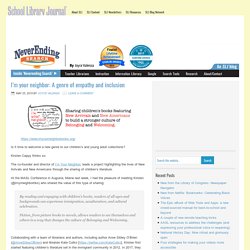
Kirsten Cappy thinks so. The co-founder and director of I’m Your Neighbor, leads a project highlighting the lives of New Arrivals and New Americans through the sharing of children’s literature. At the MASL Conference in Augusta, Maine last week, I had the pleasure of meeting Kirsten (@imyrneighborbks) who shared the value of this type of sharing: I'm Your Neighbor, Welcome New Arrivals / New Americans with Books. Project THRIVE (National campaign to support LGBTQ youth) Project THRIVE is a collaborative effort of many national organizations, each committed to identifying opportunities within their own sphere of influence to increase awareness about and provide resources to address the unmet needs of LGBTQ youth, and to highlight best practices and success stories from their respective professional fields.
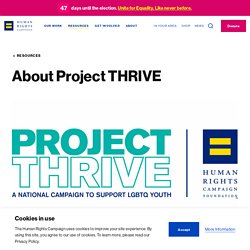
Every organization that is part of Project THRIVE has a unique role to play in strengthening family permanence and support, improving health and well-being, increasing school connection and building a foundation of resilience so that all LGBTQ youth can thrive. Project THRIVE is committed to an intersectional approach in the work, and to ensuring that LGBTQ youth of color and those who are system-involved or have a history of homelessness are a priority focus. The core goals of Project THRIVE include: To learn more about joining Project THRIVE, please contact ProjectTHRIVE@hrc.org. View Partner Organizations. Preparing for Cultural Diversity: Resources for Teachers. How can teachers effectively engage students from diverse backgrounds?
It's a question many teachers face, and of course, there isn't one prescribed strategy that works. Luckily, there are many useful resources to help new and veteran educators explore the subject. StartEmpathy Toolkit. The problem with that equity vs. equality graphic you’re using – Cultural Organizing. [NOTE: November 1, 2016.
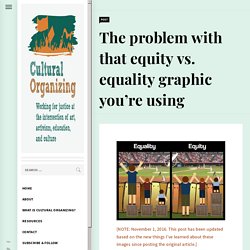
This post has been updated based on the new things I’ve learned about these images since posting the original article.] I was doing some work for a colleague at the Family Leadership Design Collaborative, and she gave me a challenge: redesign the “equity vs. equality” graphic that’s been circulating on the web. You’ve probably come across a version of this graphic yourself. There are a bunch of iterations, but basically it shows three people trying to watch a baseball game over the top of a fence. The people are different heights, so the shorter ones have a harder time seeing. In the first of two images, all three people have one crate to stand on. The distinction between equity and equality is an important one. The problem with the graphic has to do with where the initial inequity is located. LGBTQ eBook Collection (New York City School Library System) Serving Diverse Learners in the Library Media Center (KC Boyd) Addressing Implicit Bias. Image from Manascan (2020) I must say that I have learned more about equity, diversity, bias, and inclusivity in the past year than I have during my entire adult education.

Lately, students, faculty, and staff have been doing training sessions and reflective practice where I work. We are engaged in these activities because of our current national and global environment. I like that our entire school community has participated in these events. Personally, I think that a mutual commitment helps to solidify the efforts for a shared vision. I am sure that you have heard a wise person say, “The more you learn, the more you understand what you don’t know.” ATN Guide to Racial and Restorative Justice in. UnderservedPopulations toolkit 2016 06 06. Tips for Teachers: Developing Instructional Materials about American Indians.
Editors Note: This post was created as a one-page document that would fit into a single page.

It is also available as a pdf. If you have trouble opening or downloading the pdf, write to us directly (see the "Contact" tab for Debbie's email address). A one-pager was hard to do! We wanted to add resources for each of the ten points. Instead, we'll be adding resources in the comments section. On Information Equity #infoequity Wakelet. National Library Service for the Blind and Print Disabled Apply for the Service!
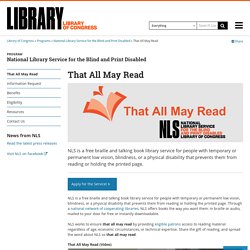
NLS is a free braille and talking book library service for people with temporary or permanent low vision, blindness, or a physical disability that prevents them from reading or holding the printed page. Through a national network of cooperating libraries, NLS offers books the way you want them: in braille or audio, mailed to your door for free or instantly downloadable. NLS works to ensure that all may read by providing eligible patrons access to reading material regardless of age, economic circumstances, or technical expertise. Share the gift of reading, and spread the word about NLS so that all may read.